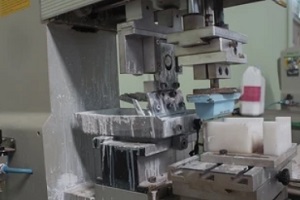 Choosing the right printing technique for any one project is of vital importance. This involves selecting the right materials for the job, using the proper methods, and also setting a workable budget. If any of these steps are not handled by professionals with proven experience, it can end up ruining the quality of the materials and result in a more expensive and time-consuming process.
Choosing the right printing technique for any one project is of vital importance. This involves selecting the right materials for the job, using the proper methods, and also setting a workable budget. If any of these steps are not handled by professionals with proven experience, it can end up ruining the quality of the materials and result in a more expensive and time-consuming process.
It’s important to understand the advantages and disadvantages of both, especially if you’ll be transferring designs to different surfaces. Depending on the materials you plan to print, it is important to understand the strengths and weaknesses for both pad printing and screen printing.
What is Pad Printing?
Pad printing is a common printing method that basically “stamps” an image onto a surface. In today’s world, pad printing has evolved into a modern process that utilizes specialized mechanical equipment. Pad printing machines consist of three primary components: printing ink, image plates, and rubber or silicone printing pads. Pad printing systems vary in shape and size but all use the same concept. At its core, pad printing involves the transferring of printing ink from the printing pad to a three-dimensional object.
When executed properly, pad printing produces very crisp and high-quality designs onto a multitude of surfaces. The process, however, can be complex and requires a deep working knowledge of the pad printing process in order to achieve consistently great results.
Some of the main advantages of pad printing include:
- High-quality prints
- Clarity of images
- Capability to utilize varying tones and colors
- Versatile and able to capture multiple types of images
Pad printing is great for larger volume orders and can produce near-perfect consistency across the board. While pad printing can be slightly more expensive than other options, it does offer consistent, customizable, and clear results.
What Is Screen Printing?
Screen printing is one of the oldest and most reliable forms of printing. Screen printing uses a mesh screen to press the image onto the desired materials. Screens can also be produced differently depending on the size and shape of the object that your design will transfer onto. The screen mesh itself is stretched using a wood or metal frame. This allows the operator to force ink only into select areas where the design is transferred to the surface of an object.
Once the screen is secured over the surface of the material, the operator will pour a specific volume of ink over the screen. A sharp-edged blade, roller, or squeegee is then used to press the ink through the stencil. The ink is forced through the open mesh areas only, and as a result, transfers the design or image to the object’s surface. This process is repeated multiple times to complete the image. Often, each screen will only use a certain color or subset of colors.
Advantages of Screen Printing
Screen printing has been around for over 2,000 years, so you can bet it has its perks!
Screen printing has the following advantages:
- Produces images with multiple colorways
- Sharp and defined printed images
- Inexpensive process
- Easy execution
- Versatile use cases
Screen printing is best used for projects that require the use of multiple colors. A single-screen image produced can be scaled up or down depending on the size required, allowing you to print large-scale or small-scale images of the same design. While traditional screen printing methods that are completed by hand are fairly quick and affordable for beginners, the technology has evolved to include automated machines such as screen printing presses and rotary screen printing.
Modern screen printing technologies have recently begun to exponentially increase production volume and decrease output time, which makes it especially advantageous to work with commercial screen printing companies that have these advanced screen printing capabilities. These professionals can ensure that the proper technique is applied to each project, ensuring a cost-effective process and high-quality, crisp production results.
Professional Graphics Inc. is a full-service commercial printing company. Their team strives to make the printing process effortless for business owners so they can save money and focus on running their business. Contact PGI today to learn more about how pad printing and screen printing can help your company.
